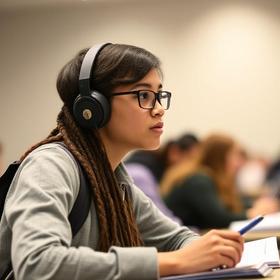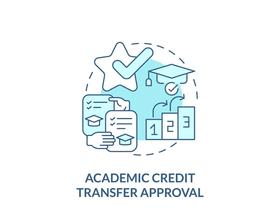- Salt Lake Community College is a public, open-access, comprehensive community college committed to serving the broader community. Its mission is to provide quality higher education and lifelong learning to people of diverse cultures, abilities, and ages, and to serve the needs of community and government agencies, business, industry and other employers.
School Highlights
Salt Lake Community College serves 36,778 students (19% of students are full-time).
The college's student-teacher ratio of 19:1 is higher than the state community college average of 16:1.
Minority enrollment is 39% of the student body (majority Hispanic), which is more than the state average of 29%.
Quick Facts (2025-26)
- Enrollment: 36,778 students
- In-state tuition: $3,469
- Out-state tuition: $11,011
- Student-teacher ratio: 19:1
- Minority enrollment: 39%
- Source: Integrated Postsecondary Education Data System (IPEDS)
Top Rankings
Salt Lake Community College ranks among the top 20% of public schools in Utah for:
School Overview
The teacher population of 1,982 teachers has stayed relatively flat over five years.
Salt Lake Community College
(UT) Community College Avg.
Carnegie Classification
Associate's Colleges: High Transfer-Mixed Traditional/Nontraditional
Not applicable, not in Carnegie universe (not accredited or nondegree-granting)
Institution Level
At least 2 but less than 4 years
Four or more years
Institution Control
Public
Public
Colors
Royal blue, Gold
Total Faculty
1,982 staff
215 staff
School Calendar
Student Body
The student population of Salt Lake Community College has grown by 24% over five years.
The student-teacher ratio of 19:1 has increased from 14:1 over five years.
The Salt Lake Community College diversity score of 0.58 is more than the state average of 0.47. The school's diversity has grown by 8% over five years.
Total Enrollment
36,778 students
4,285 students
Student-Teacher Ratio
19:1
16:1
# Full-Time Students
6,854 students
891 students
# Part-Time Students
29,924 students
3,394 students
# Enrollment Undergraduate
367 students
367 students
# Full-Time Undergraduate Students
6,854 students
891 students
# Full-Time Graduate Students
n/a
133 students
# Part-Time Undergraduate Students
29,924 students
3,394 students
# Part-Time Graduate Students
n/a
563 students
Total Dormitory Capacity
n/a
750 students
% American Indian/Alaskan
1%
1%
% Asian
4%
2%
% Hispanic
21%
13%
% Black
2%
1%
% White
61%
71%
% Hawaiian
1%
1%
% Two or more races
4%
3%
% Non Resident races
1%
4%
% Unknown races
5%
4%
Diversity Score
0.58
0.47
College Completion Rate (Students who graduate in less than 4 years)
34%
65%
College Completion Rate (Students who graduate in 4 years or more than 4 years)
n/a
47%
Average Graduate Earnings (10 Years)
$41,900
$32,700
Tuition and Acceptance Rate
The public in-state tuition of $3,469 is less than the state average of $6,267. The in-state tuition has declined by 13% over four years.
The public out-state tuition of $11,011 is less than the state average of $13,852. The out-state tuition has declined by 13% over four years.
In-State Tuition Fees
$3,469
$6,267
Out-State Tuition Fees
$11,011
$13,852
% Students Receiving Some Financial Aid
65%
73%
Median Debt for Graduates
$8,219
$15,108
Median Debt for Dropouts
$3,525
$6,334
Acceptance Rate
n/a
93%
SAT Reading
n/a
545
SAT Math
n/a
550
ACT Composite
n/a
23
ACT English
n/a
24
ACT Math
n/a
23
Source: 2024 (or latest year available) Integrated Postsecondary Education Data System (IPEDS)
School Notes
- School Mascot: Bruins
- Salt Lake Community College is an accredited, multi-campus college serving the diverse needs of the Salt Lake City community. With an open-door enrollment policy, the College serves more than 60,000 students through credit and non-credit courses and workshops each year, making it the largest institution of higher education in Utah. The Salt Lake Community College has also moved into the heart of downtown Salt Lake City. The Main Street Center, located at 115 South Main Street, is perfect for those living or working downtown. Students can easily take courses on their lunch break, before or after work. The 76,000-square-foot Main Street Center offers 12 classrooms, 2 computer labs, and a high tech conference room. Salt Lake Community College focuses upon serving students in their pursuit of vocational, technical, general, or continuing education. SLCC offers more than 100 degree programs, as well as continuing education, apprenticeships and other options to help students achieve their educational objectives. The college offers Associate of Arts Degree (AA), Associate of Arts in Business (AA), Associate of Science Degree (AS), Associate of Science in Business (AS), Associate of Pre-Engineering (APE), Associate of Applied Science Degree (AAS), Diplomas, Certificates of Completion, Certificates and Letter of General Education Completion. Salt Lake Community College is accredited by the Northwest Commission on Colleges and Universities (NWCCU), an institutional accrediting body recognized by the Council for Higher Education Accreditation and/or the U.S. Department of Education.
Frequently Asked Questions
How much does Salt Lake Community College cost?
Salt Lake Community College's tuition is approximately $3,469 for In-State students and $11,011 for Out-State students.
What is Salt Lake Community College's ranking?
Salt Lake Community College ranks among the top 20% of community college in Utah for: Least expensive tuition and Largest student body.
Recent Articles

Student Success Programs That Actually Work at Community Colleges
Discover evidence-based student success programs at community colleges for 2025, with outcomes, examples, and actionable strategies.

Best Community Colleges by Career Path in 2025
Explore top community colleges for career-training programs in 2025, including healthcare, IT, skilled trades and business pathways.

Dual Enrollment in High School: Benefits, Risks & Real Student Results
Explore the pros and cons of dual enrollment in high school, real outcomes for students in 2025, and how to decide if it’s right for you.










